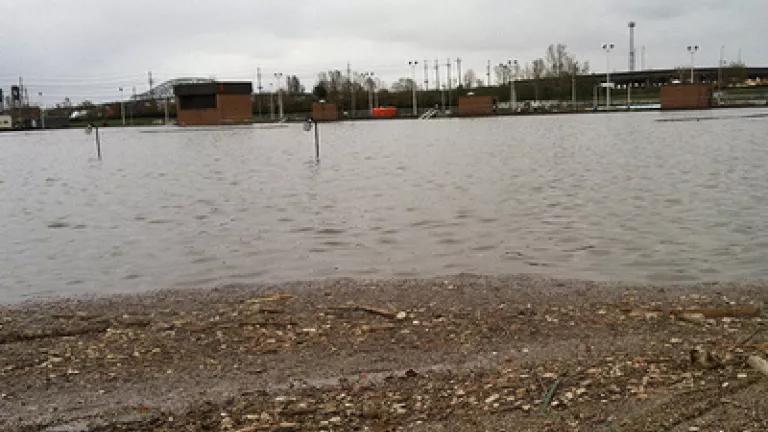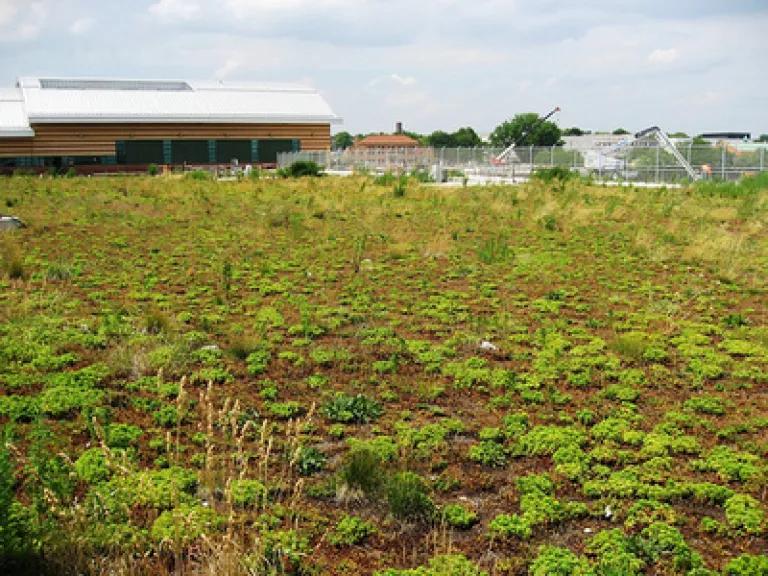New York's Plan for Post-Sandy Wastewater Infrastructure Projects Doesn't Go Far Enough to Promote Resilience

New York State is currently considering public input on its draft plan for how the state will spend $340 million on disaster resilience for wastewater infrastructure that was damaged by Hurricane Sandy.
This plan is critical to ensuring that the money is spent wisely on projects that reduce risk, and not squandered on the same types of infrastructure projects that have traditionally been done in the past – things like expansion of treatment capacity to service new, sprawling growth. Instead, we need to focus our investments on protecting vital infrastructure in vulnerable communities.
With Governor Cuomo’s draft plan, New York is moving in the right direction by attempting to increase resilience in these vulnerable areas. In fact, resilience and sustainability should be factors in all of the state’s water infrastructure decisions. If done properly, the way these funds are used could be a useful model for how states and communities across the country invest in their water infrastructure in the future. However, we think the plan needs to be improved in a few key ways in order to live up to this potential and ensure that the state’s investments are truly effective.
First, some background on the Storm Mitigation Loan Program. The program is intended to help avoid future damage like that experienced by wastewater utilities in the wake of Hurricane Sandy. Many wastewater treatment plans were heavily damaged by flooding and storm surge; the cost of repairing the damage to New York plants is nearly $2 billion. Some treatment plants – like Long Island’s Bay Park plant – were not fully operational for weeks after the storm. Together, these affected facilities discharged hundreds of millions of gallons of untreated sewage into the waters off of New York City, Long Island, and New Jersey. Sandy demonstrated just how vulnerable our infrastructure is, and how important it is to make these facilities more resilient and sustainable.
A wastewater treatment plant flooded by Hurricane Sandy storm surge. Photo credit: U.S. Army Corps of Engineers.
Through the Storm Mitigation Loan Program, which is part of the federal Sandy relief package enacted by Congress, the federal government is providing $283 million in funding. New York is required to match that amount with an additional 20%, or about $56 million. The total of $340 million will be used to fund projects that will reduce the risk of damage from future storms or other natural disasters to municipal wastewater treatment works in the 14 New York counties affected by Hurricane Sandy. The SMLP is a one-time opportunity, but it will be administered through the Clean Water State Revolving Fund, an ongoing program under the Clean Water Act that provides funding to the states so that they can offer low-interest loans to wastewater utilities.
New York’s draft plan for spending the post-Sandy SMLP funds states that all projects should protect public health and the environment, and that they should use sustainable practices in their design and construction. These are worthy goals. But if they’re going to be met, New York needs to improve the plan’s requirements for funded projects in three ways.
(1) Climate resilience should be a fundamental requirement for all projects.
As Hurricane Sandy illustrated so vividly, New York is vulnerable to a wide variety of climate-change impacts, including sea level rise, changes in storm intensity, and increased flooding. These impacts will affect wastewater utilities throughout the state: intense precipitation events can flood and damage infrastructure like treatment plants and conveyance systems, and they can lead to sewer overflows in systems that use the same pipes for rainwater and sewage. The effects of climate change can even influence the level of treatment needed to maintain clean rivers and streams that receive wastewater discharges.
Utilities can’t ignore these changes. They must begin to prepare for them immediately to ensure that they’ll be able to carry out their responsibilities in the future. These preparations must not be an afterthought – they need to be considered as part of every project that a utility carries out.
New York’s draft plan lists “preparation for climate change” as one of four optional purposes that funded projects must serve. Since this isn’t a requirement for all projects, the plan allows for the possibility that utilities will spend their grant and loan money on things like emergency plan development or treatment capacity increases without accounting for the fact that projected future conditions might be different due to climate change. We shouldn’t be wasting critical dollars on projects that have to be adjusted or completely redone in a few years because utilities didn’t plan ahead. New York should revise the plan to make climate change impacts a required consideration for every SMLP-funded project.
(2) The draft’s flood risk guidance should be clarified and strengthened.
The draft plan directs grant and loan recipients to consider flood risks in the design and construction of their projects. That’s a good idea, but New York should clarify a few details in its guidance. For example, the plan states that certain elevation and construction requirements apply to projects “located in a floodplain,” but that’s a pretty ambiguous term that needs to be defined. The plan should also let utilities know what exactly it means when it directs them to consider “best available flood hazard data.”
And of course, in line with our first recommendation, the draft plan needs to require that all project applicants consider sea level rise as part of their flood risk analysis. Given sea level rise projections for the New York region, this climate change impact could significantly affect flood risks in coastal areas.
(3) Green infrastructure should be required to the extent possible.
Green infrastructure approaches have many benefits for flood reduction and climate preparedness. These techniques restore or mimic natural conditions – allowing rainwater to infiltrate into the soil or evapotranspirate into the air – and include things like porous pavement, green roofs, parks, roadside plantings, and rain barrels. Green infrastructure is a great tool for water-focused climate preparedness efforts because of its ability to moderate the impacts of extreme precipitation – managing stormwater runoff, conserving water, preventing floods, and protecting against storm surges and sea level rise.

A green roof in Brooklyn, NY. Photo credit: NYC Department of Environmental Protection
New York’s draft plan notes in an appendix that green infrastructure projects are eligible for SMLP loans. However, we think that green infrastructure should be emphasized much more prominently in the plan itself because of the many benefits that it provides. Further, the plan should require that it be integrated into all funded projects to the extent that it’s possible. If a utility proposes not to use these beneficial green techniques, it should explain why it cannot do so.
Tell New York to improve the plan!
You have until Monday to contact New York and let them know that you want them to strengthen the plan in these important respects.
We believe these improvements will ensure that taxpayer dollars are spent in the most effective way, not on projects that will need to be rebuilt in a few years. In fact, these principles should be integrated into all infrastructure spending programs, helping to build resilience both before and after disasters strike.
One final note: as the one-year anniversary of Hurricane Sandy approaches, my colleagues at NRDC – who have been blogging ever since the storm about various aspects of recovery, mitigation and preparation – will be offering additional analyses and recommendations on how government and the public can act to reduce future threats to health and property in anticipation of additional storms and weather extremes. So stay tuned!

